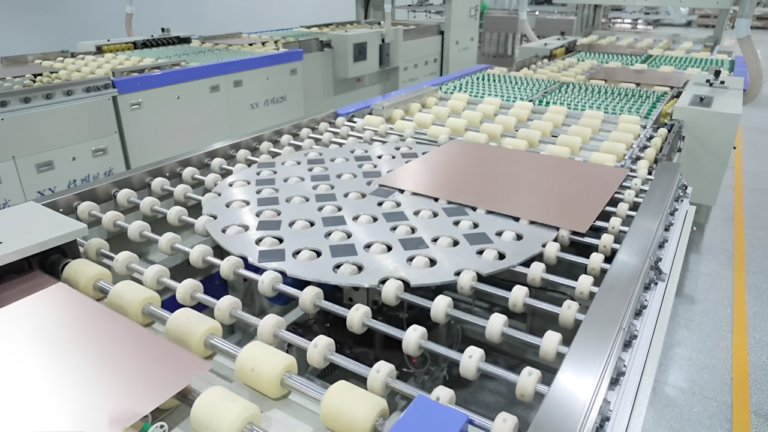More than 3000 square meters of warehouse, with a large stock
Light weight, small size, easy to air delivery
Injection molding department and machining department
24/7 one-on-one engineer service support
PCB washing machine is a specialized piece of equipment used in electronics manufacturing to clean printed circuit boards (PCBs) after processes like soldering. It effectively removes flux residues, dust, oils, and other contaminants that can affect the performance and reliability of electronic devices. Using techniques such as high-pressure spraying, ultrasonic cleaning, or chemical solutions, these machines can achieve up to 99.9% cleanliness.
Spray Nozzles or Ultrasonic Transducers of PCB Washing Machine: These are responsible for delivering the cleaning action. Spray nozzles apply high-pressure jets of cleaning solution, while ultrasonic transducers generate high-frequency vibrations to dislodge contaminants from hard-to-reach areas.
Cleaning Tank / Chamber of PCB Washing Machine: The main enclosure where PCBs are placed during the washing process. It is designed to withstand chemicals and maintain a controlled cleaning environment.
Filtration System of PCB Washing Machine: Filters out particles and contaminants from the used cleaning solution to maintain effectiveness and extend the life of the fluid.
Pump System of PCB Washing Machine: Circulates the cleaning fluid through the system, ensuring consistent pressure and coverage for uniform cleaning.
Heating Element of PCB Washing Machine: Heats the cleaning solution to enhance the removal of grease, flux, and other residues, especially in water-based cleaning systems.
Rinse Section of PCB Washing Machine: Uses deionized water or other rinsing agents to remove residual cleaning chemicals from the PCB surface.
Drying System of PCB Washing Machine: Typically involves hot air blowers or vacuum drying to ensure the PCBs are completely dry before handling or further processing.
Control Panel / PLC System of PCB Washing Machine: Allows operators to configure and monitor cleaning parameters such as temperature, pressure, cleaning time, and cycle settings.
Loading: PCBs are placed into the machine manually or using an automated loading system. Care is taken to secure the boards properly to prevent movement during cleaning.
Pre-Wash (Optional): A preliminary rinse with water or mild solution to remove loose particles and prepare the surface for deep cleaning.
Main Wash: In this stage, the PCBs are washed using high-pressure sprays or ultrasonic cleaning with a chemical solution. This step targets flux residues, soldering by-products, and oils.
Rinse: The boards are thoroughly rinsed using deionized water or a specific rinsing agent to remove any leftover cleaning chemicals or dissolved residues.
Drying: Hot air blowers or vacuum drying systems are used to ensure the PCBs are completely dry, leaving no moisture that could lead to corrosion or short circuits.
Unloading: Clean and dry PCBs are removed from the machine and are ready for inspection, testing, or the next production step.
Low spray pressure, incorrect cleaning solution, or short cleaning cycle.
Solution: Check and increase spray pressure or ultrasonic power. Use the correct cleaning solution recommended for the type of flux or contamination. Extend the washing time or adjust cleaning parameters.
Poor rinsing quality or use of hard water instead of deionized (DI) water.
Solution: Always use DI water for rinsing. Replace or regenerate the DI water system if conductivity is too high. Add an additional rinse stage if necessary.
Drying system malfunction or insufficient drying time.
Solution: Check hot air blowers or vacuum dryer for function and temperature. Increase drying time or temperature slightly if safe for the PCB. Ensure there is proper airflow around the boards.
Over-concentration of cleaning solution or expired chemicals.
Solution: Measure chemical concentration and adjust to manufacturer’s recommendation. Replace old or contaminated cleaning solution. Install a defoaming agent if necessary.
Filter clogging or buildup in nozzles/pipes.
Solution: Clean or replace filters regularly. Perform routine maintenance and flushing of nozzles and spray lines.
Software glitches or sensor faults.
Solution: Restart the system and check for software updates. Inspect sensors and connections for damage or misalignment. Contact technical support if problem persists.

Type of Contaminants of PCB Washing Machine: Understand what needs to be cleaned (e.g., flux residue, dust, oil). Different contaminants may require specific cleaning methods or chemicals.
Cleaning Technology of PCB Washing Machine: Choose between spray cleaning, ultrasonic cleaning, or a hybrid system based on the complexity and sensitivity of your PCB assemblies.
Board Size and Volume of PCB Washing Machine: Ensure the machine can handle the maximum size and quantity of boards in your production line. Batch or inline options may be better depending on throughput needs.
Chemical Compatibility of PCB Washing Machine: Verify that the machine is compatible with the cleaning agents you plan to use (e.g., water-based, solvent-based, alcohol-based).
Rinse Water Quality of PCB Washing Machine: Look for machines with deionized (DI) water rinsing systems to prevent residues and water spots.
Drying System Efficiency of PCB Washing Machine: A fast and complete drying stage is critical to avoid corrosion or short-circuits after cleaning.
Automation and Control of PCB Washing Machine: Check if the machine offers programmable controls, recipe storage, and real-time monitoring for easier operation and repeatable results.
Maintenance and Support of PCB Washing Machine: Choose a machine with easy access for cleaning and servicing, and make sure the supplier offers reliable technical support and spare parts.
Environmental and Safety Compliance of PCB Washing Machine: Ensure the machine complies with local environmental regulations (e.g., wastewater management, chemical handling) and has built-in safety features.
Cost vs. Long-Term Value of PCB Washing Machine: Consider not just the purchase price, but also operating costs, chemical usage, energy consumption, and durability.
102, No.14-1 Jixiang 3rd Road, Yixin Community, Longgang District, Shenzhen, Guangdong Province, China.
+ 86 181 8840 4906
eternal02023@gmail.com
We’re professional manufacturer of PCB equipment and consumable. We can give you the best advice for your requirements.
© All Rights Reserved.
WhatsApp us

Eternal Tech is committed to becoming an expert in PCB conveying systems.